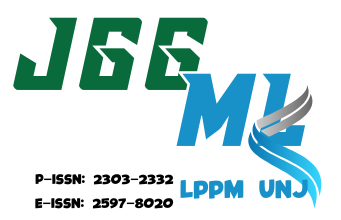Evaluating The Effectiveness of Wastewater Treatment In the Reusable Packaging Industry: A Case Study of ALNER’S WWTP In Indonesia
DOI:
https://doi.org/10.21009/jgg.v132.06Keywords:
wastewater treatment, reusable packaging, electrochemical treatment, moving bed biofilm reactor (mbbr)Abstract
The widespread use of single-use plastic packaging has become a significant environmental issue, particularly in the Global South. This study examines the innovative approach of the startup Alner, which employs a combination of electrochemical treatment and Moving Bed Biofilm Reactor (MBBR) technology in its wastewater treatment plant (WWTP) to manage wastewater generated from the cleaning of reusable packaging. Wastewater samples were collected before and after treatment, and analyzed for key parameters such as Chemical Oxygen Demand (COD), Biological Oxygen Demand (BOD5), Total Suspended Solids (TSS), oil and grease, ammonia, surfactants, and phosphates. The results demonstrated a significant reduction in all measured pollutants, with COD reduced by 99.58% and BOD5 by 99.56%. Post-treatment values for all parameters were well within the regulatory limits set by the Ministry of Environment and Forestry Regulation No. P68/MenLHK/Setjen/Kum.1/8/2016. This study underscores the potential of reuse models in reducing single-use plastic waste and highlights the importance of effective wastewater treatment in maintaining environmental sustainability. Alner's approach provides a scalable and environmentally friendly solution, setting a benchmark for similar initiatives in the industry, and supports the feasibility and sustainability of integrating advanced wastewater treatment technologies in the reusable packaging sector, offering a comprehensive solution to plastic pollution.



